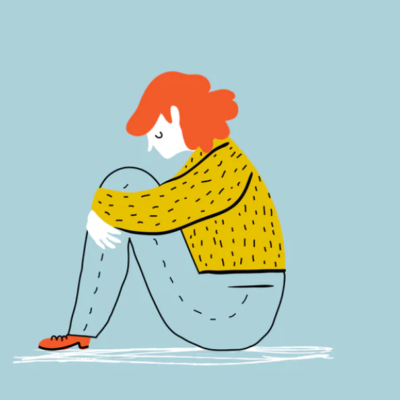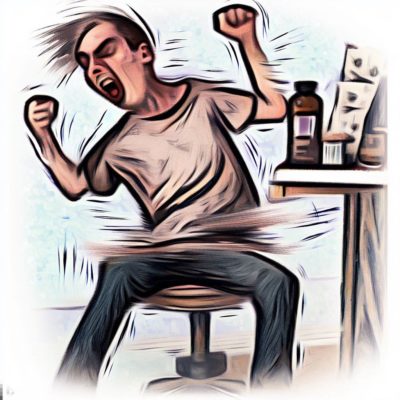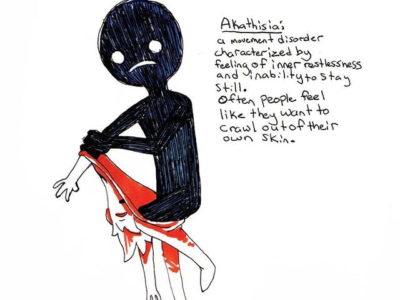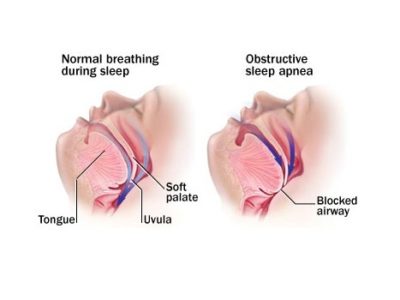
Article topic: Female Sexual Interest / Arousal Disorder
Author name: Mailaa Obeidat
Editor name: Ihda Mahmoud Bani Khalaf, Sadeen Eid .
Reviewer: Ethar Hazaimeh
Keywords: Female sexual interest, arousal disorder, Hypoactive sexual desire disorder.
Introduction
Attention is considered to be an important part of the sexual stimulation cycle, and researchers have differentiated between the roles of initial (involuntary) and subsequent (voluntary) attention paid to sexual stimuli as part of the facilitation of sexual desire. (1) Sexual problems affect people of all genders and ages, with prevalence being especially high among women. (2) Low sexual desire is a type of female sexual dysfunction known as hypoactive sexual desire disorder or sexual interest/arousal disorder (FSD). (3) Women benefit from behavioral and pharmacological interventions. (4)The first struggle in providing this benefit is the detection and diagnosis of the disorder. (4) However, the private and personal nature of the sexual activity and the potential for feelings of shame, inadequacy, and embarrassment create unique challenges to effective communication about sexual health for both patient and doctor. (4) However, hypoactive sexual desire disorder (HSDD) was subdivided into male hypoactive sexual interest disorder and female sexual interest or arousal disorder. (4)
Epidemiology
The most common sexual disorder affecting women in the US is known as hypoactive sexual desire disorder (HSDD), which is characterized by a lack of or decline in sexual fantasies and desire that is linked to distress. (4) HSDD affects about one in ten premenopausal women and is more common than a major depressive disorder (MDD), which has a prevalence rate of 7.1%. (4) Furthermore, HSDD has a neurobiological basis in the dysregulation of sex hormones and neurotransmitters and can result in significant psychological problems, sexual distress, and impact on the mental and emotional well-being of women and their partners. (5)
8.9% of women between the ages of 18 and 44, 12.3% between the ages of 45 and 64, and 7.4% of women over 65 have HSDD. (4) Although low sexual interest rises with age, distress falls; therefore, the prevalence of HSDD stays largely constant with age. (4)
Etiology and Pathogenesis
Postmenopausal estrogen deficiency leads to changes in urogenital tissue. (6) Sexual dysfunction and urinary dysfunction are the most inevitable but least publicized problems of estrogen deficiency, and these represent important quality-of-life issues that patients and healthcare providers are often reluctant to discuss. (6) In addition to estrogen deficiency, oophorectomies women may suffer from androgen deficiency and problems with libido. (6) While the relationship with one’s partner is the quintessential factor in female sexuality, hormone deficiency is important, especially in reference to genital atrophy. (6)
Moreover, sexual function can be directly or indirectly impacted by pregnancy, alcohol or nicotine consumption, pelvic organ prolapse, urinary incontinence, post-menopause, stress, mood disorders, body image problems, low self-esteem, feelings of inadequacy, age, level of education, the quality of long-term relationship with the partner, chronic or neurological diseases, and side effects of cancer treatment (adjuvant or neoadjuvant). (7)
Most women with breast cancer have negative feelings and psychopathological, biological, and social symptoms, such as anger, fear, fatigue, mood, sleep, and sexual disorders. Moreover, a cancer treatment that involves surgical interventions, neoadjuvant chemotherapy, anti-hormonal therapy, radiation, or targeted therapies, may result in psychosocial effects and sexual dysfunctions. (8)
Risk factors
Consistently significant risk factors for female sexual problems were: poor physical health, poor mental health, stress, abortion, genitourinary diseases, female genital mutilation, relationship dissatisfaction, sexual abuse, and being religious. (16) Consistently important protective factors included: older age at marriage, exercising, daily affection, intimate communication, having a positive body image, and sex education. Some factors had an unclear effect: age, education, employment, parity, being in a relationship, frequency of sexual intercourse, race, alcohol consumption, smoking, and masturbation. (16)
Diagnosis
There is no consensus as to the routine diagnostic algorithm for females with sexual dysfunction. (9) The basic features of diagnosis include history (sexual, psychosocial, and medical), physical examination (external and internal genitalia), psychologic interview (psychologic issues, partner relationship), and laboratory testing (estrogen, testosterone, glucose, CBC, creatinine, LFTs, cholesterol, UA, Pap smear, vaginal cultures as considered appropriate). (9) Patient (and partner) education (anatomy, physiology, epidemiology, risk factors, etc.) as well as reversing modifiable causes such as medical conditions, medication-related sexual dysfunction, and lifestyle changes should be performed prior to the initiation of treatment. (9)
DSM-5
HSDD and female sexual arousal disorder (FSAD) are combined into a single syndrome called female sexual interest/arousal disorder in the Diagnostic and Statistical Manual of Mental Disorders (DSM-5) fifth edition (FSIAD). (10) FSIAD is defined in the DSM-5 as significantly reduced sexual interest/arousal as manifested by one of the three following characteristics for a minimum of six months: (11)
1. no/reduced interest in sexual activity.
2. no/reduced sexual/erotic thoughts.
3. absent/reduced initiation of sexual activity and unreceptive to partner’s attempts to initiate.
4. no /reduced sexual excitement/pleasure during sexual activity in almost all or all (75-100%) sexual encounters.
5. no / reduced sexual interest/arousal in response to internal or external sexual/erotic cues (written, verbal, visual).
6.no/reduced genital or nongenital sensations during sexual activity in almost all or all (75-100%) sexual encounters.
Clinical Presentation
Because FSIAD is a relatively new diagnosis, there are few studies describing the consequences experienced by women with it. (17) Women with FSIAD may resemble those who have previously been diagnosed with hypoactive sexual desire disorder (HSDD) and female sexual arousal disorder, but recent research suggests that their symptoms are more severe than those of those who meet the previous standards for HSDD. (18) In the limited studies available, women with FSIAD reported lower health-related quality of life, including more depressive symptoms, and lower sexual and relationship satisfaction compared with healthy control subjects. (19). Moreover, interpersonal factors reported by women, like a partner’s sexual difficulties and poor sexual compatibility, play a critical role in women’s experience of low desire. (20) Arousal disorders have a biopsychosocial etiology and are frequently present in conjunction with other sexual issues. (21)
Treatment
As the underlying reason for decreased sexual desire may be multifactorial, an appropriate treatment plan may be multifaceted. Psychosocial, behavioral, and biological causes and contributing factors are all potential targets of intervention. (4)
Sex therapy, psychotherapy, (11), and the treatment of postmenopausal women’s vulvovaginal atrophy, vaginal dryness, and dyspareunia are modalities that may directly benefit patients. (12) The role of the primary care physician and the threshold for referral to a behavioral health doctor or sexual medicine expert will depend upon the clinician’s comfort and interest in treating sexual problems, the patient’s willingness to see other clinicians, and the cost and availability of sexual medicine consultation. (4)
Knowledge and communication between partners are essential foundations for any intervention. (13) It is necessary to assess the patient’s and partner’s beliefs about sex and sexual functioning, address myths and mistaken beliefs, and enhance understanding with essential and correct information about sex and sexual functioning. (13) Also, It is essential to assess the patient’s ability to communicate their experience, feelings, and preferences with their partners. (4) Upon this foundation, efforts to reduce inhibitory processes can focus on, among other things, negative beliefs and feelings about sex, body image concerns, problems with relationships, including pressure to perform, or general deficits in a loving environment in which the woman feels safe and valued. (13)
Visibly, influencing the excitatory and inhibitory neuromodulatory processes affecting sexual responsiveness by psychopharmacological drugs may be a tool to treat FSIAD. (14) The search for drugs that can facilitate sexual interest and arousal—also called aphrodisiacs—has a long history. (14)
Flibanserin has recently been approved in the United States for treating HSDD in premenopausal women. (15)Flibanserin is a centrally acting postsynaptic 5-HT1A (serotonin) receptor agonist and a 5-HT2A antagonist that produces a decrease in serotonin activity and an increase in dopamine and norepinephrine activity in brain pathways associated with sexual desire. (15) In a number of large trials in women with a diagnosis of hypoactive sexual desire disorder, it was shown that the use of flibanserin(compared to a placebo) resulted in a significantly larger increase in the number of monthly so-called “satisfying sexual events” (SSEs). (15)
Conclusion
Basic science and clinical research in FSD are needed to overcome the gender gap, achieve a more balanced therapeutic perspective between psychologic and physiologic factors, and give female patients an enhanced opportunity for relief from a persistent or recurrent sexual condition that causes personal distress. (9)












